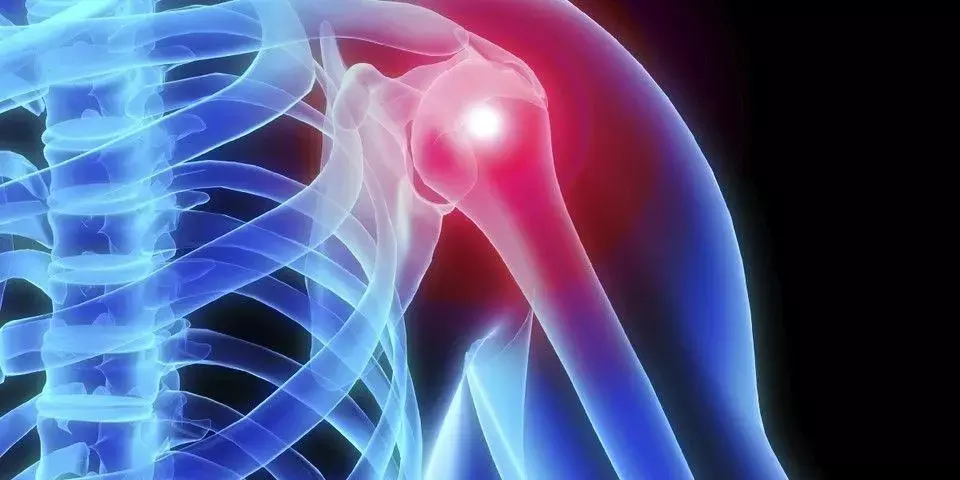- Home
- Medical news & Guidelines
- Anesthesiology
- Cardiology and CTVS
- Critical Care
- Dentistry
- Dermatology
- Diabetes and Endocrinology
- ENT
- Gastroenterology
- Medicine
- Nephrology
- Neurology
- Obstretics-Gynaecology
- Oncology
- Ophthalmology
- Orthopaedics
- Pediatrics-Neonatology
- Psychiatry
- Pulmonology
- Radiology
- Surgery
- Urology
- Laboratory Medicine
- Diet
- Nursing
- Paramedical
- Physiotherapy
- Health news
- Fact Check
- Bone Health Fact Check
- Brain Health Fact Check
- Cancer Related Fact Check
- Child Care Fact Check
- Dental and oral health fact check
- Diabetes and metabolic health fact check
- Diet and Nutrition Fact Check
- Eye and ENT Care Fact Check
- Fitness fact check
- Gut health fact check
- Heart health fact check
- Kidney health fact check
- Medical education fact check
- Men's health fact check
- Respiratory fact check
- Skin and hair care fact check
- Vaccine and Immunization fact check
- Women's health fact check
- AYUSH
- State News
- Andaman and Nicobar Islands
- Andhra Pradesh
- Arunachal Pradesh
- Assam
- Bihar
- Chandigarh
- Chattisgarh
- Dadra and Nagar Haveli
- Daman and Diu
- Delhi
- Goa
- Gujarat
- Haryana
- Himachal Pradesh
- Jammu & Kashmir
- Jharkhand
- Karnataka
- Kerala
- Ladakh
- Lakshadweep
- Madhya Pradesh
- Maharashtra
- Manipur
- Meghalaya
- Mizoram
- Nagaland
- Odisha
- Puducherry
- Punjab
- Rajasthan
- Sikkim
- Tamil Nadu
- Telangana
- Tripura
- Uttar Pradesh
- Uttrakhand
- West Bengal
- Medical Education
- Industry
Interlocking intramedullary nails less invasive than locking plates for treating proximal humerus fracture

Proximal Humerus FractureGuo et al conducted a study to evaluate the efficacy of locking plates versus interlocking intramedullary nails in the treatment of proximal humerus fractures to provide clinical data support and theoretical guidance. They found that Interlocking intramedullary nails are more minimally invasive than locking plates, but fracture reduction and fixation take longer. There was no significant difference in pain and shoulder function scores between the two internal fixation strategies for the treatment of proximal humerus fracture.
The article has been published in Journal of Orthopaedic Surgery and Research.
Patients with proximal humerus fracture from the Third hospital of Shijiazhuang city and Third hospital of Hebei medical university, China were selected, included and divided into the locking plate group and the interlocking intramedullary nail group according to the intervention received. Information pertaining to the perioperative period (operation time, hospital stay, blood loss, etc.) of patients in both groups was collected. VAS pain scores , shoulder activity Constant-Murley scores and postoperative complications were documented. The perioperative data of the two groups were compared and P<0.05) was considered statistically significant.
The key findings of the study were:
• A total of 64 patients were enrolled, including 36 patients in the locking plate group, with a mean age of 61.3±13.9 years, while the mean age of the interlocking intramedullary nail group was 65.6±11.2 years.
• There was no statistical difference in gender, affected side, injury mechanism and Neer classification between the two groups (P>0.05).
• However, the average operation time of the locking plate group was shorter than that of the interlocking nail group (84.9±11.7 vs. 102.6±22.1 min, P=0.00), and the intraoperative blood loss of the locking plate group (137.4±16.8 ml) was higher than that of the interlocking nail group (72.5±10.5 ml, P=0.00).
• There was no significant difference in the VAS score and Constant-Murley score between these two groups at the final follow-up.
The authors concluded that – "The interlocking intramedullary nail approach is less invasive compared to the use of locking plates but takes longer to achieve fracture reduction and repair. There was no significant difference in pain and shoulder function scores between the two internal fixation approaches for the treatment of proximal humerus fractures. Detailed preoperative evaluation and accurate intraoperative operation, combined with the clinical experience of orthopedic surgeons, can improve the postoperative satisfaction of patients by designing individualized surgical plans and enhancing postoperative functional exercise guidance."
Further reading:
Comparison of surgical efficacy of locking plates and interlocking intramedullary nails in the treatment of proximal humerus fractures Zheming Guo, Linchao Sang et al Journal of Orthopaedic Surgery and Research (2022) 17:481https://doi.org/10.1186/s13018-022-03360-6
MBBS, Dip. Ortho, DNB ortho, MNAMS
Dr Supreeth D R (MBBS, Dip. Ortho, DNB ortho, MNAMS) is a practicing orthopedician with interest in medical research and publishing articles. He completed MBBS from mysore medical college, dip ortho from Trivandrum medical college and sec. DNB from Manipal Hospital, Bengaluru. He has expirence of 7years in the field of orthopedics. He has presented scientific papers & posters in various state, national and international conferences. His interest in writing articles lead the way to join medical dialogues. He can be contacted at editorial@medicaldialogues.in.
Dr Kamal Kant Kohli-MBBS, DTCD- a chest specialist with more than 30 years of practice and a flair for writing clinical articles, Dr Kamal Kant Kohli joined Medical Dialogues as a Chief Editor of Medical News. Besides writing articles, as an editor, he proofreads and verifies all the medical content published on Medical Dialogues including those coming from journals, studies,medical conferences,guidelines etc. Email: drkohli@medicaldialogues.in. Contact no. 011-43720751


